ALREADY A PAID SUBSCRIBER? SIGN IN
This article is dedicated to Susan Sheehan, a longstanding American client of Dan’s, who writes the most wonderful emails that frequently have us doubled up in tears. One of these sent last year started (all Susan’s capitals), “I always read DIG DELVE…naturally, it is my absolute fantasy life blog. I imagine myself calm and RELAXED looking at the row of trees you have on the horizon, at your enchanting house and garden, and whipping up a batch of ELDERFLOWER AND ROSE cordial and a RHUBARB GALETTE…all sounds so romantic, and utterly doable. Then I just have to slap myself in the face and out of the TRANCE your blog, Instagram posts and new website induce…it is all just lovely. I want to be just like you when I grow up.”
So Susan, here is a picture of my RELAXED life this week. Dan has been away for 10 days. I am working on the picture edit of the book he has written about the Tokachi Millennium Forest. There have been, and I kid you not, around 40,000 images to go through, which has required an insane amount of focus, concentration and organisation. At around 4pm each day I Facetime Julie, our American friend who is designing the book. She lives in Portland, Oregon. It is usually around 8pm before we finish looking at layouts, discussing the design and swapping images around. Then a walk for the long-suffering dog, dinner (or more likely cheese and biscuits) and then bed. Then repeat. Yesterday, I had the florist Flora Starkey here, squeezing in a winter photoshoot en route to Bristol airport, while an old university friend also arrived to stay for the weekend. Fortunately Sophie is an excellent cook since, on Saturday, I have also invited good friends and godchildren for lunch.
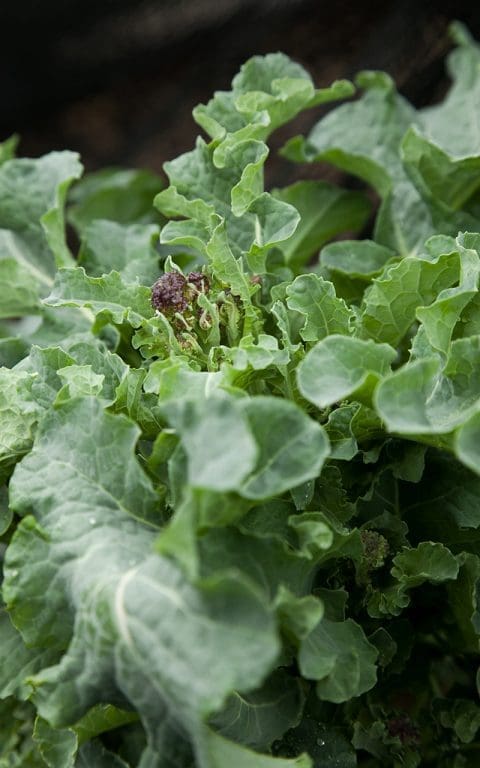
Trying to shoehorn cooking, writing and photographing a recipe for Dig Delve into that schedule is, unfortunately Susan, the very opposite of RELAXING and, although not every week is this extreme, it is closer to the usual state of affairs than the idyll you describe. It doesn’t always feel very doable or very grown up. Sometimes we have to cut corners and speed things up to fit everything in, so this extremely easy recipe was directly inspired by a starter we were served at our Waterloo local, The Anchor & Hope, just last week.
I used to love the crispy ‘seaweed’ that my dad would order from our local Chinese restaurant when I was a kid. I thought I was eating something very exotic, of course, when the mundane truth was that it was just shredded, deep-fried cabbage. When this plate was brought to our table last week it took me straight back to those foil takeaway containers, with the same crisp texture and delicious savoury taste. The bright and smoky harissa was the perfect foil to the dark leaves, while the cool contrast of crème fraiche, made the whole plate sing. I immediately knew that I wanted to reproduce it at home.
We have 5 beds of brassicas that keep us going through the winter, and are now close to having only two still producing. Many of the red cabbages, which were our most successful germinator last year, are still standing, as are the second sowing of curly kale. The Cavolo nero are producing less leaf, but have started to send out flower spikes in step with the Early Purple Sprouting broccoli. A new winter crop for us, which I will definitely be sowing a lot more of next September, is the turnip green Rapa Senza Testa from Real Seeds, which has stood fresh and green all winter. From one row we have only had a handful of servings of the delicious buttery greens, but they are still producing and now also going to flower.
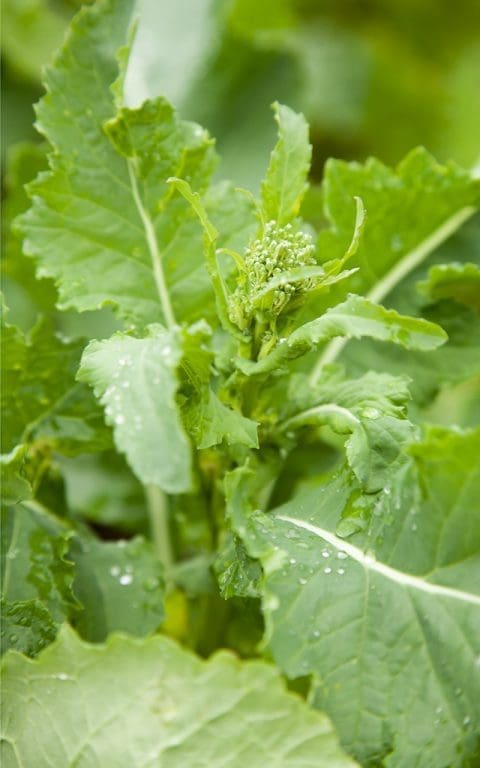
Two weekends ago in the woods I was a little perturbed to see the tiny emergent leaves of the wild garlic, which seemed far too early and too young and few to harvest. However, already they are here in number, and so yesterday I picked a handful to flavour the harissa. I made the harissa with a variety of smoky, medium and hot dried chilies from the pantry together with some fresh red chilies from the greengrocer. Unless you like it very hot avoid the bird’s eye and scotch bonnet types. The recipe below makes more than you require. It keeps well in the fridge covered with olive oil.
To make this into more of meal it is delicious topped with a poached or fried egg.
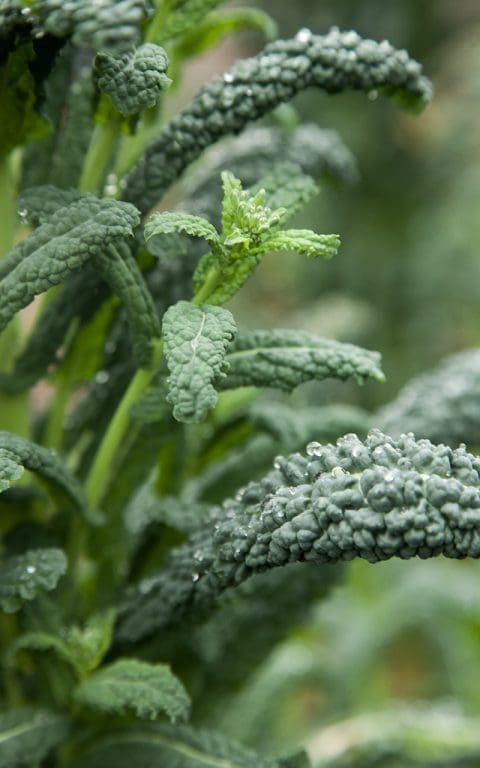
Serves 2
200g mixed brassica flower sprouts, tender stems only
2 litres rapeseed oil
HARISSA
25g mixed dried chilies
25g fresh red chilies
1 tablespoon cumin seeds
1 tablespoon coriander seed
1 tablespoon fennel seed
A small handful of young wild garlic leaves
1 teaspoon smoked paprika
1 tablespoon tomato puree
1 teaspoon sea salt
2 tablespoons lemon juice
1 tablespoon red wine vinegar
100ml olive oil
Crème fraiche, to serve

First make the harissa.
Put the dried chilies in a heatproof bowl and pour over enough freshly boiled water to cover. Leave to soak for 30 minutes.
Toast the seeds in a small dry frying pan over a high heat until they become fragrant. Tip into a mortar and grind to a fine powder.
Remove the seeds and stalks from the fresh chilies and do the same with the soaked dried chilies. Put them all into a small blender with the other ingredients. Blend until a fairly rough paste is achieved.
Transfer to a small Kilner type jar.
Heat the oil in a large deep pan until smoking. Fry the flower sprouts in batches for a minute or two at the most. Be very careful as you put them into the oil as they will splutter. Keep a close eye on them, as they can take differing lengths of time to cook. When done, lift them from the oil with a slotted spoon and put into an ovenproof dish lined with kitchen paper. Put the dish in a low oven while you cook the remaining flower sprouts, transferring them each time to the oven to keep warm.
When the sprouts are all done transfer them to a hot serving plate. Toss over a couple of pinches of sea salt. Spoon over some of the harissa. Put some crème fraiche on the side of the plate. Eat immediately.
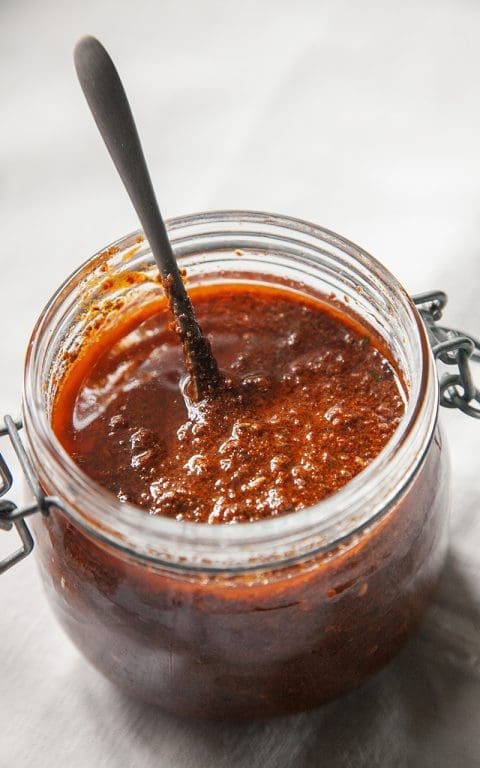
Recipe & photographs: Huw Morgan
22 February 2020
The snowdrops are just starting to hit their stride. Their new leaves and delicate white flowers pushing through bare soil have a freshness that is a welcome contrast to the prevailing mud and low light. It is also a time when, with straining post-festive season trousers, we tend to want to eat more freshly, craving simple greens and cleaner food as a balance to the richness common to many winter dishes.
The colours of the winter vegetable garden are as vital as the snowdrops, primarily green and white; leeks and Swiss chard, celeriac, turnips and parsnips. We have a bed of salsify which, after you have scrubbed and peeled the gnarly, whiskery roots, reveal flesh of an unexpected pristine, pearly whiteness. In the barn are the last of the stored potatoes. Then there are the brassicas; cabbages Savoy and Hispi, three types of British kale, one of Russian, Cavolo Nero and purple sprouting broccolis just beginning to form. However, the cabbages have suffered this year from the long, hot summer, with many not hearting up, and so we have been eking them out or using them raw in salads so that they go a bit further. This recipe uses just one large leaf per person.
Soups are the most regular feature of our winter eating – there is always one on the go – but they are most often made simply with one predominant vegetable. They are usually pretty fast affairs too, made on the hoof with quickly cooked onions, a limited number of flavourings and water straight from the tap. It can sometimes take half an hour or less to go from plot to soup bowl with a smooth, liquidised soup of carrot, pumpkin or parsnip.
This week, however, I felt like taking some time to make something with a little more care, which preserved the delicacy of the vegetables and featured a well-flavoured vegetable broth made with the trimmings. The addition of wholegrain hulled barley (rather than pasta or rice) and creamy cannellini beans makes for a particularly nutritious and filling soup. Barley has the added benefits of being rich in trace minerals and fibre, and has long been used medicinally to aid liver function and weight loss. Pearl barley can be used in its place, but is not a wholegrain, so lacking the benefits that they bring.
Although you could add any winter veg to this soup, the limited colour palette of green and white is refreshing and clean. Just looking at it makes you feel as though it is going to be good for you. If you have fennel, cauliflower, white beetroot or parsnip available, these could all be added to or replace any of the ingredients listed in the appropriate proportions. Although it is still a little early in the season, this soup is the perfect vehicle for a mix of foraged herbs and greens. So, if you are making this in a few weeks time, you could add wild chervil, wild sorrel, wild garlic, dandelion leaves, Alexanders or nettle tops to increase its somewhat virtuous, health-giving (and waistline-reducing) properties.
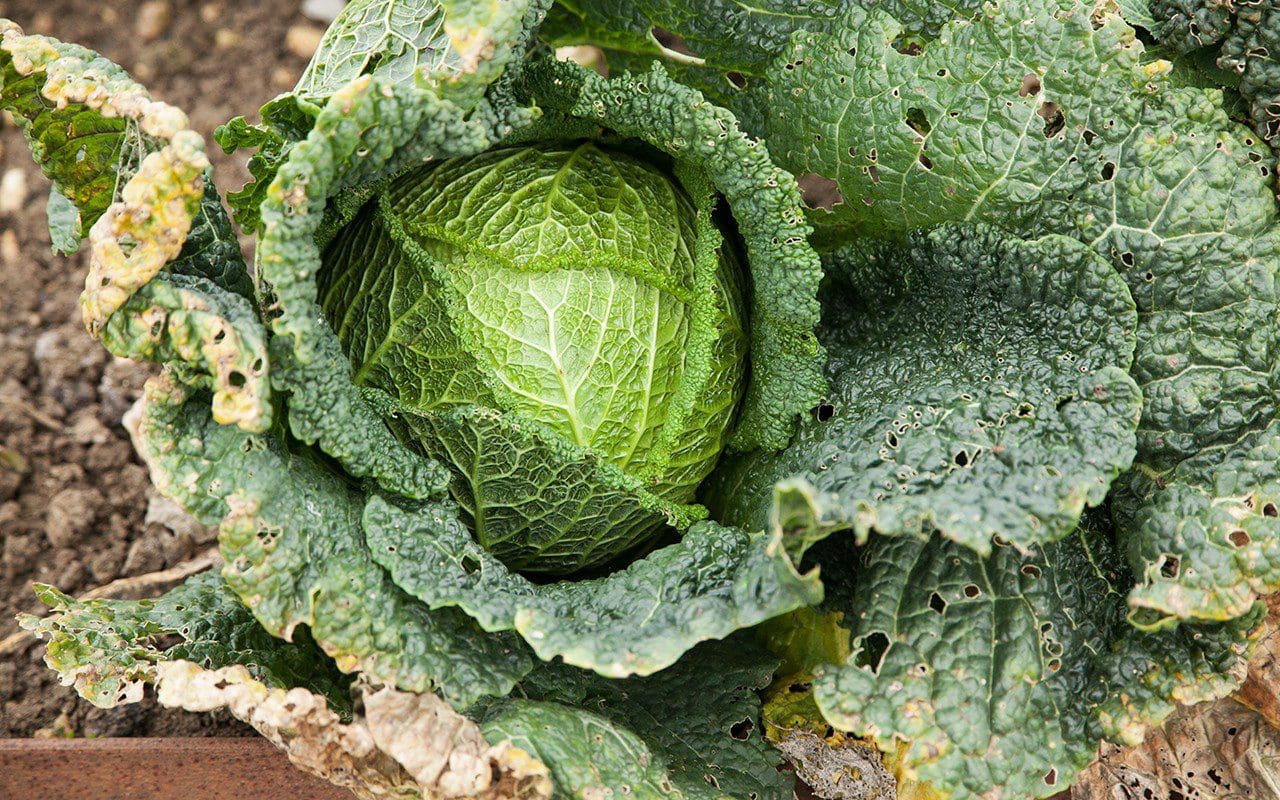 Savoy cabbage ‘Marner Grufewi’
Savoy cabbage ‘Marner Grufewi’
INGREDIENTS
1 small celeriac, to yield 250g cleaned and peeled
1 medium turnip, to yield 250g cleaned and peeled
3 large leeks, to yield 250g cleaned and trimmed
1½ litres water
1 large bay leaf
A small branch of thyme
A sprig of rosemary
A piece of Parmesan rind (optional)
1 teaspoon green peppercorns
1 unwaxed lemon, juiced
3 large of cloves garlic
100g hulled barley
4 leaves of Savoy cabbage
200g cooked cannellini beans
A good bunch of flat leaf parsley
Sea salt
Olive oil
Serves 6
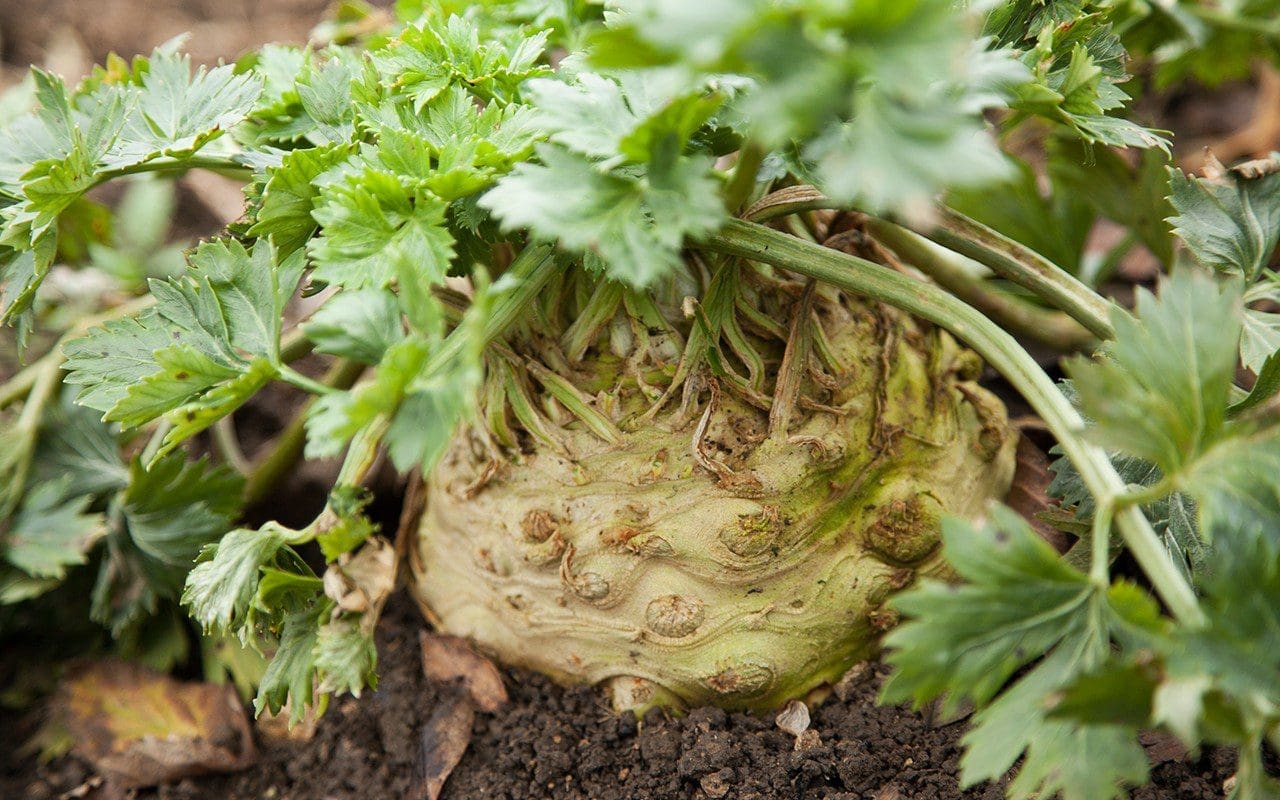 Celeriac ‘Prinz
Celeriac ‘Prinz
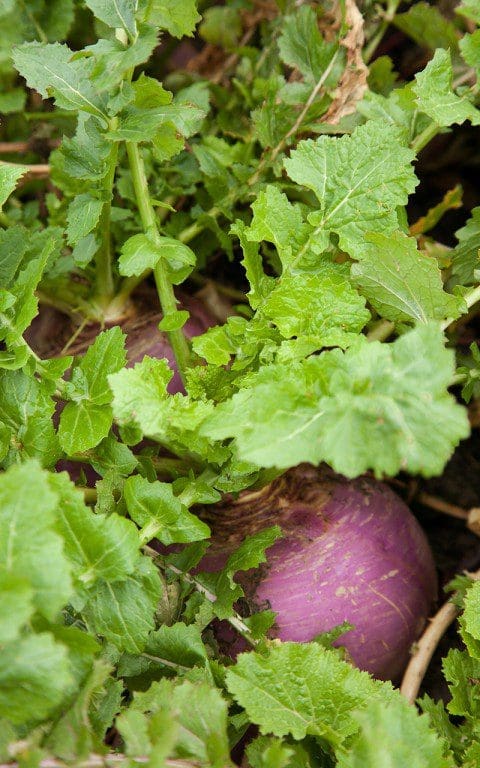 Turnip ‘Navet De Nancy A Feuille Entiere’
Turnip ‘Navet De Nancy A Feuille Entiere’
METHOD
Start by making the stock. Scrub the turnip and celeriac well to remove all soil. Remove the leaves, then peel. Rub the celeriac all over with one half of the juiced lemon to prevent browning. Reserve the best, young turnip leaves and the tender young central leaves of the celeriac, if it still has them. Put the peelings and the older leaves into a pan with the water.
Remove any browning leaves from the leeks, then cut off the dark green tops and wash off any soil under a cold running tap before adding them to the stock pan. Wash the cabbage leaves thoroughly. Remove the thick midribs with a sharp knife and put them into the pan. Tear the cabbage leaves into pieces about 4cm square and reserve.
Remove the leaves from the parsley and reserve. Add the stalks to the stock pan. Add the bayleaf, thyme, rosemary, Parmesan rind (if used) and half a teaspoon of the whole green peppercorns, coarsely crushed. Use a sharp knife or vegetable peeler to pare a 6cm long piece of lemon zest, being careful not to include any pith, and add this to the pan.
Put the pan on a high heat with a lid on and bring to the boil. Reduce the heat to a gentle simmer and cook for about 30 minutes. Strain the stock through a sieve, discard the vegetables, herbs and Parmesan rind and return the stock to the pan with the barley. Bring back to a gentle simmer, removing any scum that forms with a slotted spoon. Cook on a low heat with the lid on for 40 to 50 minutes until the barley is soft, but still has some bite.
While the stock and barley are cooking prepare the vegetables. Put the juice of half the lemon into a bowl with 500ml cold water. Cut the celeriac into 1cm square dice and put immediately into the acidulated water, to prevent browning. Cut the turnip into similar sized dice. Cut the white parts of the leeks on the diagonal into slices about 1cm thick. Reserve the pale green leek tops. Peel and finely chop the garlic.
Warm 2 tablespoons of olive oil in a large pan over a low heat. Add the garlic and white parts of the leeks. Stir to coat in the oil, then put the lid on the pan and allow to sweat for about 10 minutes until soft and translucent. Stir from time to time. They should not take on any colour. Drain the celeriac and add to the leeks together with the turnip. Stir. Replace the lid and continue to sweat over a very low heat for about 20 minutes until almost cooked, stirring from time to time.
Add the barley and cooking stock to the pan of vegetables together with the cannellini beans and return to a low heat. Season the soup with plenty of salt and the remaining green peppercorns, finely ground.
Slice the pale green tops of the leeks very finely. Coarsely chop the reserved celeriac leaves and parsley. When the soup has returned to a simmer add the cabbage. Cook for 2 to 3 minutes with the pan covered. Remove from the heat while the cabbage leaves are still bright green. Throw in the finely sliced leek tops, turnip and celeriac leaves and parsley and stir well. Check the seasoning and add lemon juice to brighten the flavours.
Ladle into warmed bowls and finish with a good amount of your best olive oil.
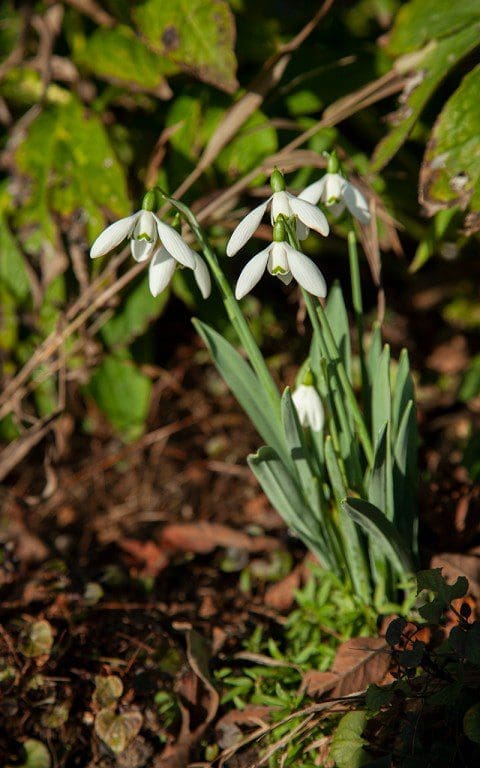
Recipe & photographs: Huw Morgan
Published 26 January 2019
We are sorry but the page you are looking for does not exist. You could return to the homepage